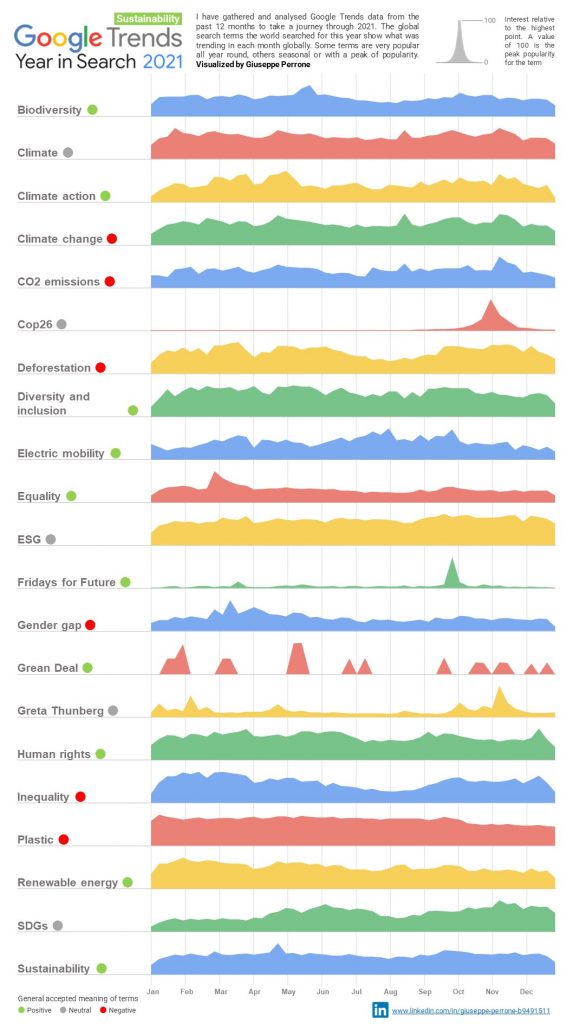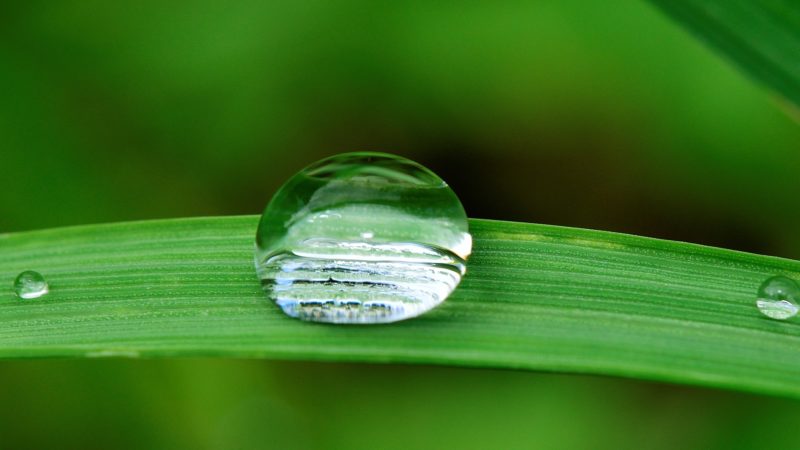A Year In (Google) Searches On Sustainability3 min read

We are approaching the end of the year.
People usually take stock or just have some thoughts on the year that is about to end. But also a time when one wonders – after all – what happened in the previous 12 months.
Here are the trends in Sustainability for 2021, based on the searches done on Google during the year.
Sustainability trends in 2021
Peaks
What it is immediately possible to notice is the presence of seasonal terms, characterized by peaks: this is the case, for example, of “Cop26”. The same thing happens to “Fridays for Future” which however presents a slightly less flat trend with small peaks during the year corresponding to – guess what – Fridays.
Downhills
Other terms have decreasing trends, so to speak: it is the case of “Equality” (with a peak between February and March) and “Gender gap” (with a peak, in this case in March, perhaps at the Woman’s Day).
“Plastic” is another term with a decreasing trend, with particular reference to the last quarter of the year (October-December). The same thing happens for “Electric Mobility”.
“Renewable energy” also has a generally (and slowly) decreasing trend.

U-shaped valleys
It is also interesting to note the U-shaped valley terms, to be understood as trends that build a valley or U (also U-shaped). This is the case of “Climate Action” with peaks in April-May and October-November (in correspondence with the Cop26 event).
The case of “SDGs” is more marked, with a U that forms later in the year (peaks in June and October-November, again close to the sustainability event of the year – Cop26).
Less pronounced, however, is the case of “Deforestation” which, on the contrary, finds a drop in interest since June, only to find vigor again in September-October.
For “Inequality” the loss of interest is from May to September, with research peaks in March and October.
Multiple peaks
There are also cases of multiple peaks as for “Greta Thunberg” (obviously the greatest peak is in October-November at Cop26). “Green Deal” with several sudden peaks throughout the year (there are about ten).
Evergreens (!!!)
Finally, the evergreen terms (it is appropriate to say it in this context!) that find fertile ground in searches throughout the year: “Sustainability” first of all, but also “ESG”, “Human Rights”, “Climate”, “Diversity and Inclusion”.
The remaining terms have no marked, particularly obvious, or immediately explainable trends (“Biodiversity”, “Climate Change”, “CO2 emissions”).
Conclusion
There is a general tendency to reduce searches over the course of the year. There are no terms that see a trend of single and constant growth (perhaps SDGs is the only one, net of intermediate trends).
Let’s see what the 2022 trends will be that will lead to an increase in searches and requests for information on the Internet. Google docet.
Source: Google Trends
Featured image by Lauren Edvalson on Unsplash


